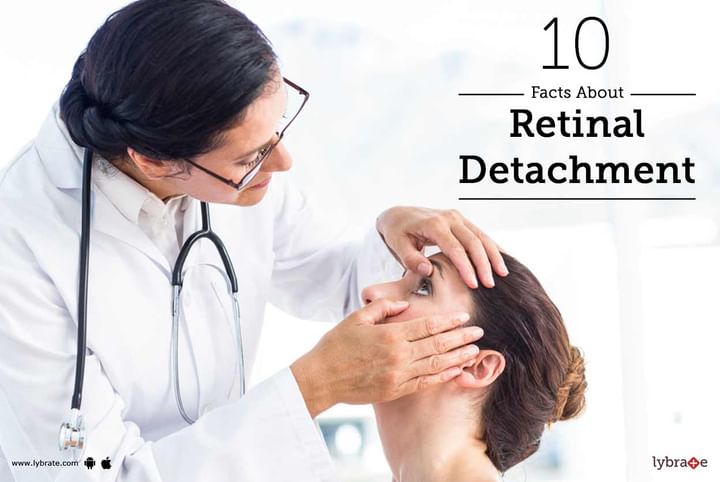Get the App
For Doctors
Login/Sign-up
Last Updated: Jan 10, 2023
BookMark
Report
10 Facts About Retinal Detachment
Dr. Tejas D. ShahOphthalmologist • 37 Years Exp.MBBS, MS - Ophthalmology, Diploma in Ophthalmology , Fellowship in Cornea and Anterior Segment
Retinal detachment is a condition in which a layer of tissue called the retina gets lifted or pulled far from its initial position in the eye. This can cause a number of symptoms including slight vision impairment and blurred vision as well as pain. The retina is a light sensitive part that can be found in the rear portion of the eye. This part is responsible for sending visual signals to the brain which helps in forming the images that we see when we set our eyes on an object. If a person with this problem is not treated immediately, he or she can suffer from permanent vision loss.
Risks: You are more prone to retinal detachment if you:
- Have had injury (damage or blow) specifically to the eye
- Have as of now had a separation in one eye, then there is an improved probability of a separation in the other eye.
- Have a family history of retinal separation.
- Have weak eye-sight
Here are 10 facts that one needs to know about retinal detachment:
- Once in a while little ranges of the retina get torn. These are called retinal tears or retinal breaks. These can cause retinal separation.
- Obtuse injury, as from a tennis ball or damage by a sharp object in the eye can prompt retinal dysfunction.
- A family history of a disconnected retina that is hereditary could be one of the reasons for this disorder.
- The second eye of a patient with a retinal separation must be inspected by an ophthalmologist immediately.
- High astigmatism builds the danger of a retinal detachment. The danger increases to 2.4% when compared with a 0.06% danger for a defected eye at 60 years of age.
- In the event that you have lost vision in one eye because of a detachment, it can in some cases take a couple of months to get used to seeing with just the one normal eye.
- Laser surgery: Laser surgery can treat little openings and tears in this part of the eye. Little smolders are made around the opening to "weld" the retina once more into the right spot. It is performed in the eye specialist's clinic.
- Individuals taking certain kinds of eye drop that have the danger of building up a retinal separation. Pilocarpine, which for a long time was a pillar of treatment for glaucoma, has for quite some time been used for retinal separation.
- People with incessant irritation of the eye (uveitis) are at a greater danger of suffering from retinal detachment.
- Cross section degeneration of the retina is a kind of diminishing of the outside edges of the retina, which happens in 7% to 10% of the overall public.



+1.svg)
